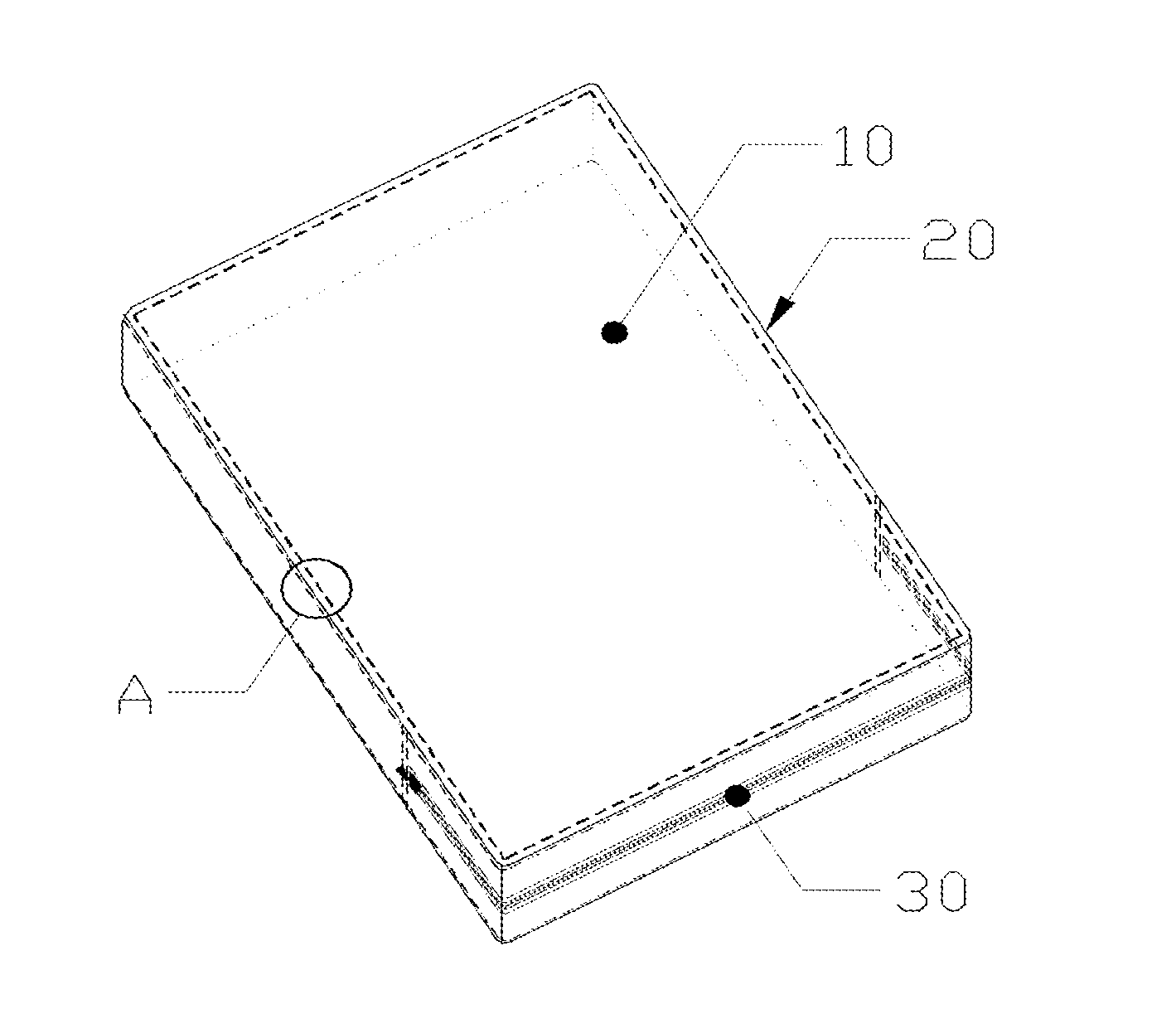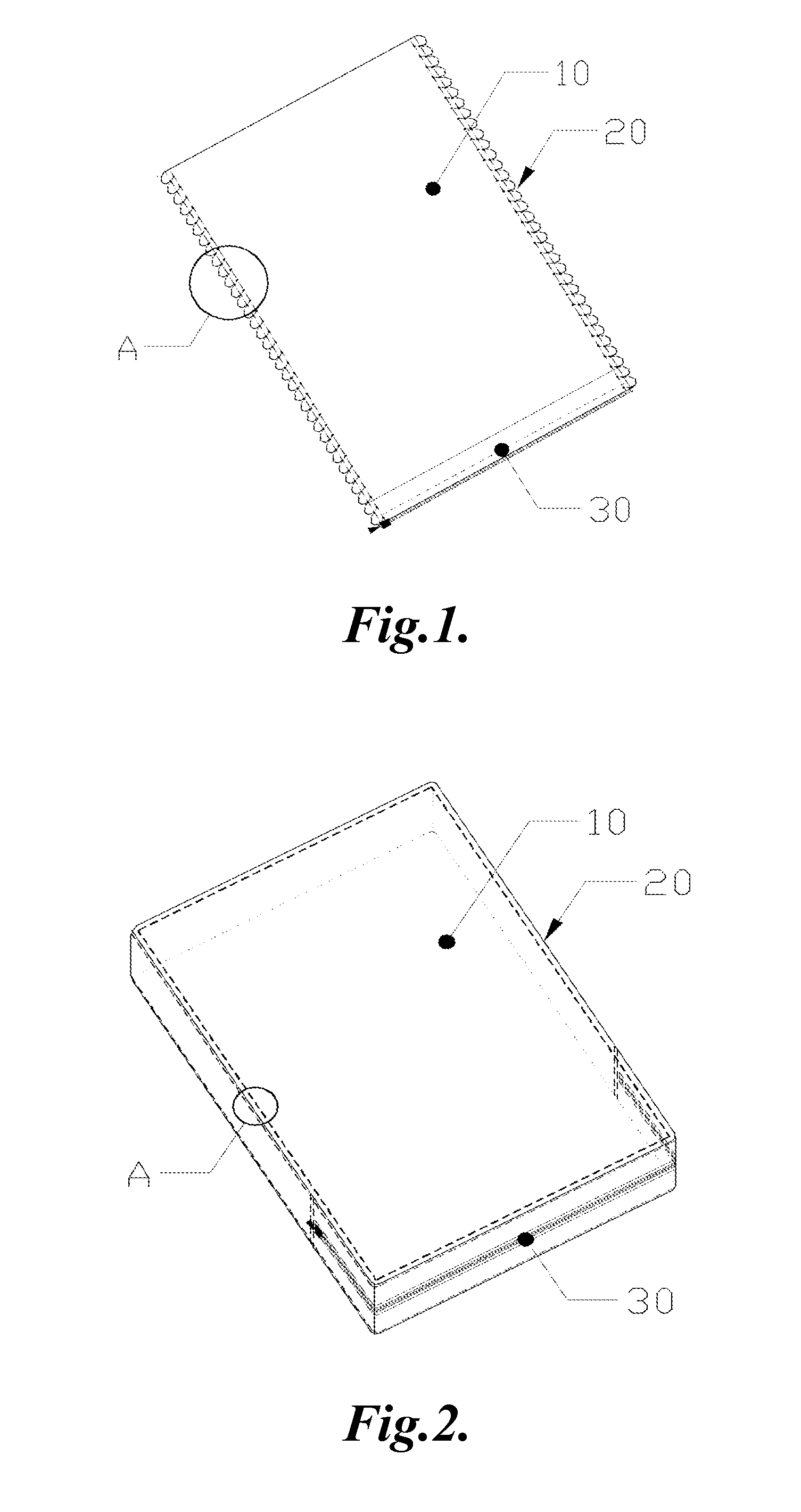Allergen-barrier bedding cover
a technology of allergy-barriers and bedding covers, applied in the field of bedding covers, can solve the problems of inability to keep the same evasion ratio against dust mites in textiles with ocher dyes, and limited waterproof function of pads, so as to reduce the causes of allergy, reduce the contamination of pillows, and keep a clean home environment.
- Summary
- Abstract
- Description
- Claims
- Application Information
AI Technical Summary
Benefits of technology
Problems solved by technology
Method used
Image
Examples
Embodiment Construction
As shown in FIG. 1 and FIG. 2, the bedding cover is comprised of polyurethane coated cover fabric (10) that covers up bedding, and a closure (30) that is formed along a side or three sides of said bedding cover. Said polyurethane coated cover fabric (10) is cut in certain sizes, turned inside out, and sewn. As shown again in FIG. 1, said closure (30) and said polyurethane coated cover fabric (10) are sewn together, and then the upper and bottom parts of said polyurethane coated cover fabric are sewn together. Said closure (30) is formed with a zipper on a side of the bedding cover for pillow and cushion covers, and three sides of the bedding cover for mattress and duvet covers. Also, in case of mattress covers, the bedding cover is formed in a shape of a rectangular parallelopipedon, and each surface is made from said polyurethane coated fabric (10).
FIG. 3, FIG. 4, FIG. 5, and FIG. 6 show the different ways of sewing said polyurethane coated cover fabrics (10) together and sealing t...
PUM
| Property | Measurement | Unit |
|---|---|---|
| width | aaaaa | aaaaa |
| width | aaaaa | aaaaa |
| elongation | aaaaa | aaaaa |
Abstract
Description
Claims
Application Information
 Login to View More
Login to View More - R&D
- Intellectual Property
- Life Sciences
- Materials
- Tech Scout
- Unparalleled Data Quality
- Higher Quality Content
- 60% Fewer Hallucinations
Browse by: Latest US Patents, China's latest patents, Technical Efficacy Thesaurus, Application Domain, Technology Topic, Popular Technical Reports.
© 2025 PatSnap. All rights reserved.Legal|Privacy policy|Modern Slavery Act Transparency Statement|Sitemap|About US| Contact US: help@patsnap.com



